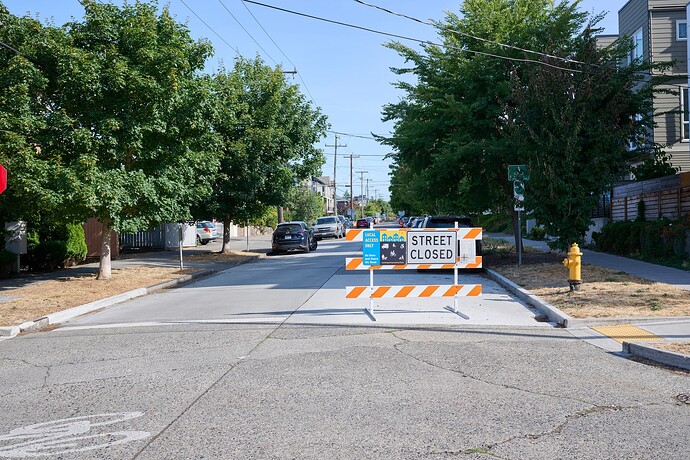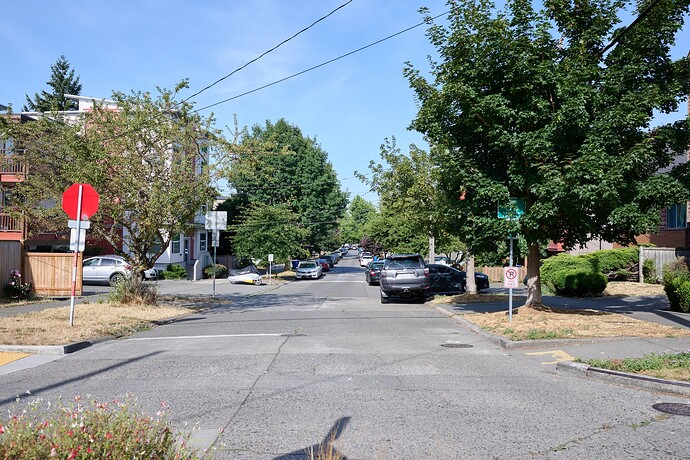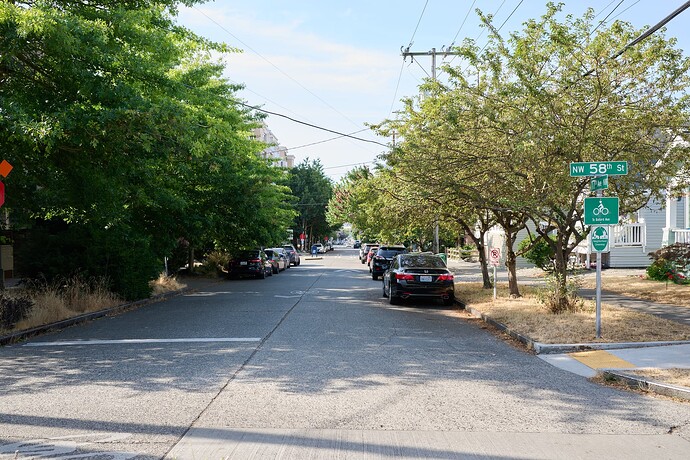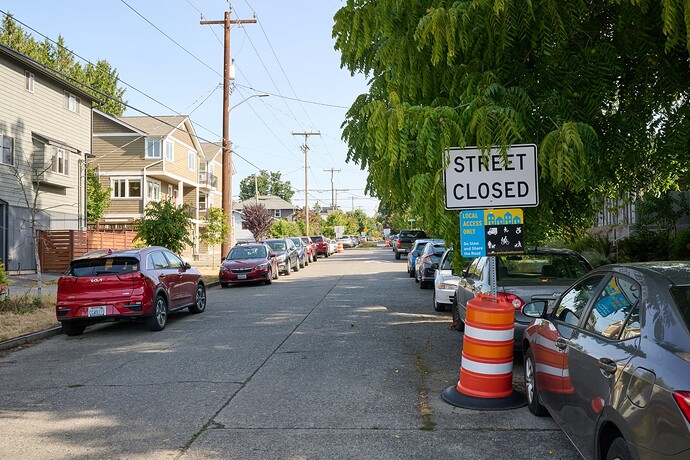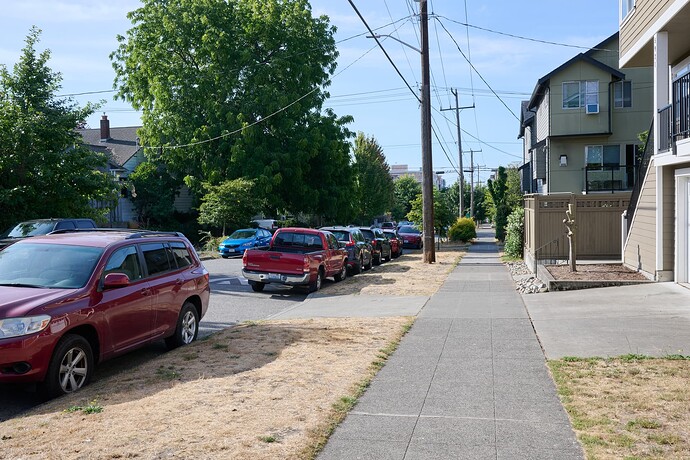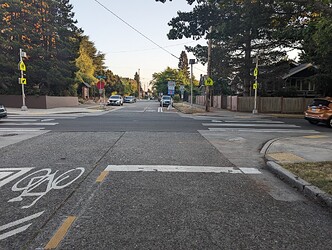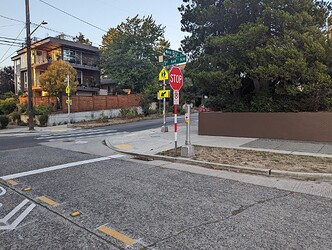There’s been some discussion of if Seattle’s Healthy Streets are highway=living_street or not, so when I was in Seattle for the OSM birthday BBQ, I went to Northwest 58th Street and 17th Avenue Northwest to take some pictures of the Seattle Healthy Streets and Neighborhood Greenways. From the intersection, north is a Healthy Street, and the other three directions are Greenways.
I parked to the south at the Ballard Post Office and walked north.
Approaching the Healthy Street from the south, there is signage indicating local access only for the Healthy Street. It is on a barrier like you’d see for construction works, but there are signs that say they’re being replaced by planters.
The other three directions are signed as bicycle routes with sharrows but have no unusual features
Continuing north to 59th and 17th the signs change to being on poles, still indicating local access only and go slow and share the road.
Looking back, it’s the same sign on a pole for headed southbound.
I have pictures of the next intersection too, but it’s more of the same.
Physically, there are no special characteristics. The sidewalks and road are constructed like any others in the area.
It was about 8:30AM, so there weren’t huge numbers of people out, but everyone except me was using the sidewalk. There were no signs of people using the street for purposes other than operating or parking a vehicle, like basketball hoops or anything else near the street.
After visiting, I think I can draw a few conclusions.
-
The Greenways are normal highway=residential, with appropriate tags to indicate they are part of a bike network and have sharrows. There is no special access or street infrastructure.
-
The streets are motor_vehicle=destination. The signage is clear on this, with “local access only”.
-
They are highway=residential, not highway=living_street. When looking at a living street, I would expect
- a reduced speed limit;
- physical design that gives greater or equal priority to pedestrians and no barrier between different road areas such as kerbs;
- people to naturally walk on the roadway; and
- signage indicating pedestrians have right of way, not just to share the road.
None of these are present. Walking down the middle of the road seemed like no different than walking down the middle of any other residential road in the area. The street has access restrictions, which should be noted in access tags, but I don’t see that that makes it a living_street.
I don’t see that any of this changes when they get planters as described in the posters.
